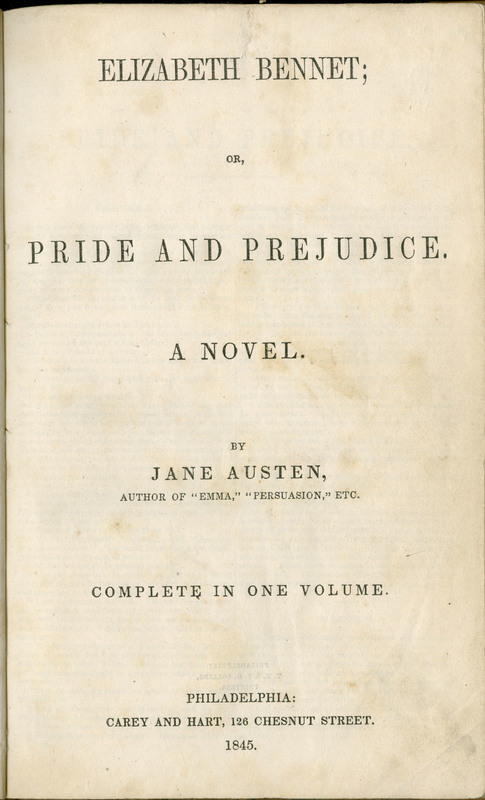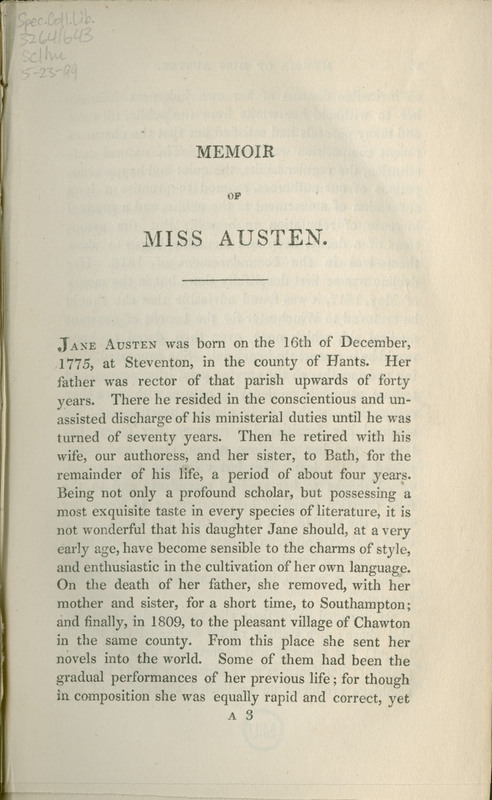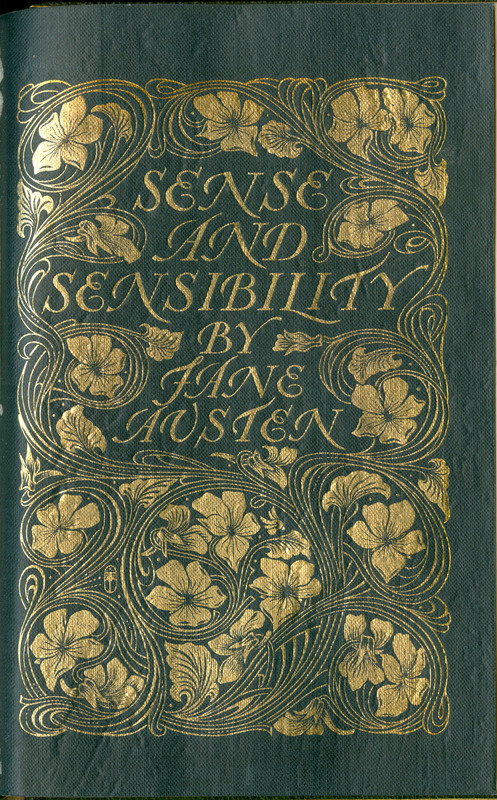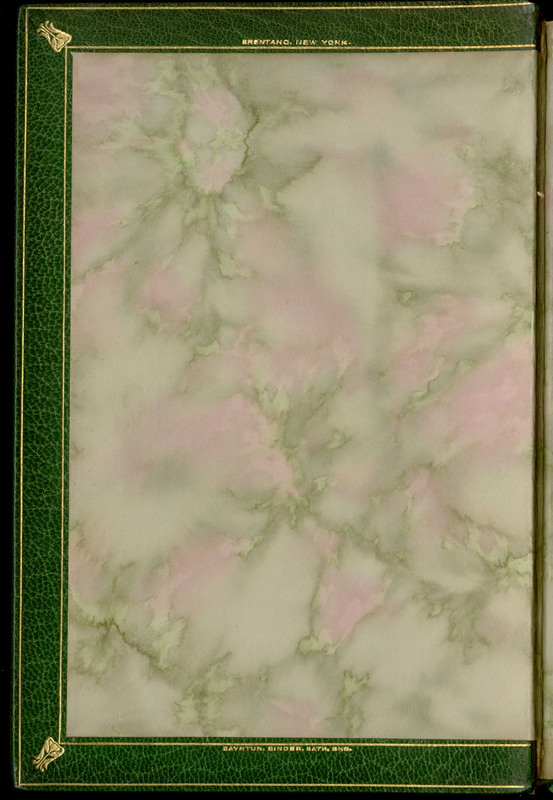Sense and Sensibility
Bound in publisher's cloth and neatly printed, this 1846 edition of Sense and Sensibility has two unusual features: the fact that its introduction is an un-attributed “memoir” of Jane Austen’s life, and its publication of all three volumes of the novel in one volume.
The memoir was written in 1818 by Henry Austen, Jane’s favorite brother, but wasn’t published with an attribution until 1870. While this memoir was not specifically written for Bentley’s Sense and Sensibility, it highlights details of Jane Austen’s life that may have inspired her writing the novel, such as the untimely death of the author’s father and her family’s subsequent, forced change of residency. It provides the reader with the resources to interpret, making it a significant addition to the novel.
This edition of Sense and Sensibility also contains all three volumes, which is rare, as novels were traditionally sold separated by volume due to cost and printing factors. The price of one three-volume novel was equivalent to half the weekly income of a modest, middle-class household in the 1840s. Because of this expense, three-volume novels were sold mainly to private circulating libraries, where many families could access them. It is likely, then, that this very edition was once part of a library collection. This contrasts with novels of today, which are all generally published and sold as a singular entity. This transition demonstrates the rich transmission history of the novel and how its form has changed.
(Katelyn Carroll, Melina Glusac)
In the first four decades of the nineteenth century, reading was considered an elite privilege. However, beginning in the second half of the century, Victorian advocates who hoped to advance English society initiated a general push for expanding education and literacy. This granted lower classes more opportunities for reading. One reaction to this expansion of literacy, designed to reaffirm the cultural distinctions among different social classes, was the introduction of expensive, lavishly-bound books designed to appeal to only upper class book buyers. As certain books became more extravagant, they were often valued as much for appearance as for their content. Concentrating on the rarity and appearance of books, members of the elite augmented the divide between classes through the types of books they used and collected.
The re-binding of a book to make it increasingly ornate and fashionable is reflected in this 1899 version of Sense and Sensibility. This book is a deluxe and intensified version of the original. It includes, at the end of the re-binded book, the original spine and cover. Under the marbled paper on the interior of the cover, the words “Bayntun, Binder, Bath, Eng.” are stamped into the green leather. George Bayntun created a booming book-binding business in the early twentieth century. His company still thrives today under the motto: “fine bindings and rare books.”
(Eden Baniel, Hannah Ellis

Pride and Prejudice



